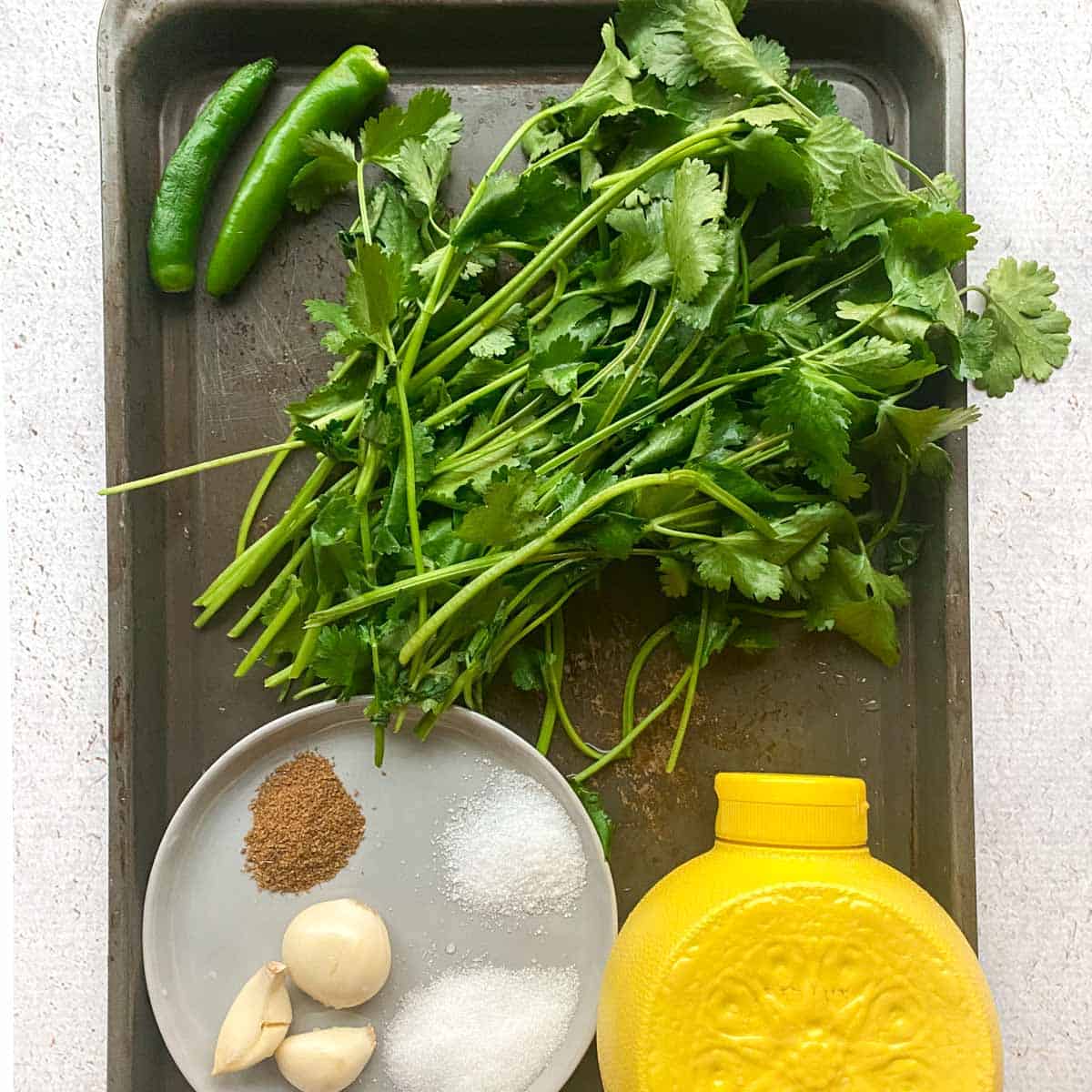How do you make Indian green chutney?
Although there are many recipes, including mine which you’ll find below, an Indian green chutney is a recipe that you can easily riff on based on what you have in your pantry or fridge. Here are the categories of ingredients that can go into composing a green chutney of your liking:
Herbs - Typically an Indian green chutney has cilantro and mint for both its green color and light and herby flavor. My recipe uses a combo of both. If you don’t love the taste of cilantro, just swap it out for mint and vice versa. Spices - My recipe uses cumin powder for its earthiness and garlic cloves for depth and umami. These are staples I always have in my kitchen. However, you can use a combo of garlic and ginger or substitute in a quarter of an onion to get the same depth and body for your chutney. In addition, you can layer on additional spices like coriander powder or chaat masala to add even more spices to your chutney. Acid - Lemon juice is a standard for acidity and brightness. However, you can use lime or any citrus you have on hand. You can alternatively use green apple chunks which add both acidity and sweetness. Heat - Thai chilis are the ones most commonly found in Indian chutneys because they add quite a bit of heat. However, if you don’t want as much heat you can substitute a less spicy chili like Fresno chilis, Serranos, or jalapeños, or omit them completely for a sweeter chutney. Sweetness - In my cilantro mint chutney recipe, I add a bit of sugar to round out all the flavors. This sweetness helps mellow out the punchy flavors of garlic and balance everything out. If you like a sweeter mint chutney, you can increase the amount of sugar or alternatively add honey!
Try to include at least one ingredient from each category to get a well balanced green chutney of your liking. You really can’t go wrong; keep tasting the chutney as you go and adjust for salt to create the perfect condiment to store in your fridge.
Consistency of chutney
The consistency of your cilantro-mint chutney really depends on what you end up using it for and your personal preference. In general, you want to ensure that you have blended the chutney enough so there aren’t big pieces of garlic or cilantro/mint leaves. However, from there you can add more or less water for a consistency you desire. I like to keep the chutney thicker for applications like mint-chutney finger sandwiches and for dipping sauces like for samosas or my samosa pot pie recipe. However if I want to drizzle the green chutney for pani puri, I generally thin it out a little bit with additional water. You can look for other ideas on using the green chutney here.
How long does chutney keep?
This chutney lasts for 2-3 weeks in the fridge. Over time, the chutney will get darker green as it oxides. One way to reduce oxidation is to add a layer of lemon juice to the top of the cilantro mint chutney before storing. You can alternatively freeze green chutney in the freezer for months. It is helpful to add the green chutney to ice cubes and freeze to allow you to thaw small amounts when you are ready to eat!
What to eat Indian green chutney with
This is a bright chutney that can liven up just about anything. It is great to break up the heaviness of fatty cuts of meat like steak, pork chops, or grilled chicken thigh. However, it also provides great acidity to fried dishes like samosas or pakoras. Last but not least, it is a must for any chaats that you make to give them levity and spice. Here are some of the recipes on the blog that would pair so well with this green chutney:
Chaat Nachos Samosa Pot Pie Cilantro Mint Chutney Sandwiches
Other Recipes You May Like
Cilantro-Mint Chutney Sandwiches Oven Baked Samosa Pot Pie Chaat Nachos





